What to do if yucca leaves turn yellow?
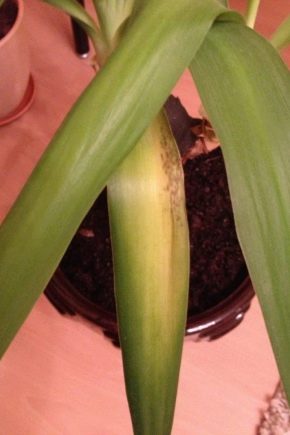
If you find that the leaves of the yucca have turned yellow, most likely the matter is in the uncomfortable growing conditions of the culture. But this concept is too general, so each point should be considered separately. The palm tree is not the most demanding plant, but if the lighting in the room is insufficient, the temperature is low, and the air humidity is far from normal, the palm tree gets sick and dies.
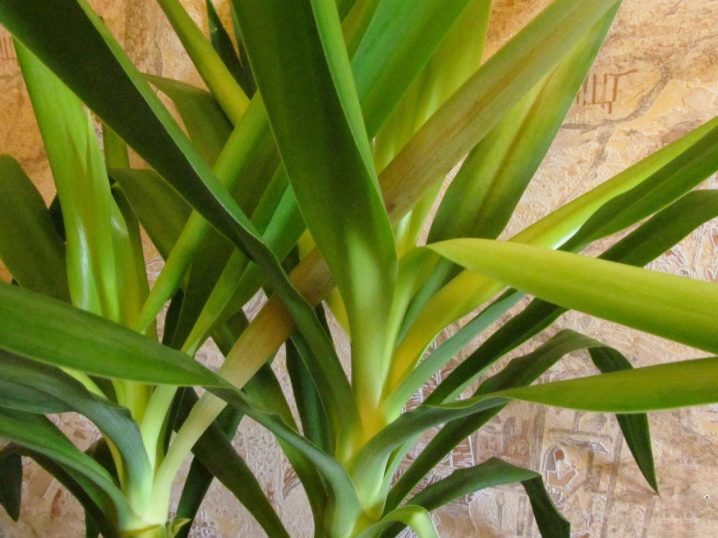
When the yellowness of the leaves keeps within the norm
Yucca is still an indoor flower, although it is customary to call it a false palm. If the bottom row ages evenly, turns yellow and dries up, this can be interpreted as the natural life cycle of the plant. Its woody trunk does not actually branch, the crown consists of pointed leaves - all this makes the yucca exotic and suggests that its leaves should not turn yellow. But even yellowing underneath is normal.
To improve the decorative effect of the false palm, the lower yellowish rows of leaves should be cut off. Do not touch healthy and strong greens.
This is necessary not so much to save the plant (nothing threatens it), but to maintain its attractive appearance.
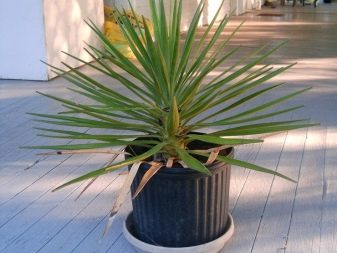
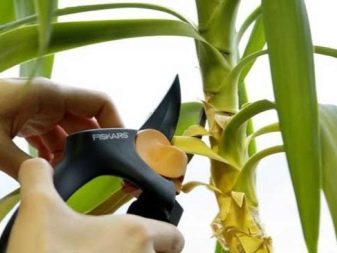
Yellowing at the tips
More often the tips turn yellow and dry out due to lack of light in winter and dry air. From October to the last month of winter is a dangerous time for yucca due to the reduced daylight hours. If the weather is cloudy outside, the plant will not like it either. Therefore, in the cold season, the appearance of the yucca may deteriorate somewhat.
During this period, not only the lower leaves lose their color - the leaves can stretch and turn yellow in the most prominent places. Drying of the tips is also noted, which may be accompanied by a loss of leaf turgor.

Treatment for yellowing consists in the use of phytolapma (or any other local lighting). If you organize a palm tree 10-12 hours of diffused light a day, it will stop the yellowing process and heal the plant.
If it's about dry ends, then it makes sense to check if the batteries heat up too hot during the heating season., and is the yucca too close to them. The emphasis should be on air humidification. There are special devices for this. Even simple vases of water (for flowers) can help in this situation. Today on sale you can find decorative ceramic vases-humidifiers, they are fixed on the wall, water is regularly collected in them. For a small room, this is quite a way out.
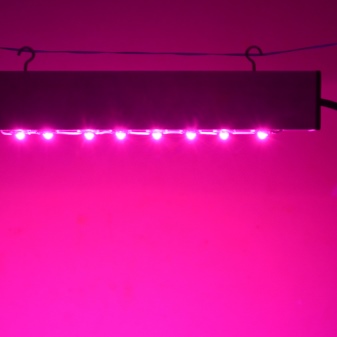
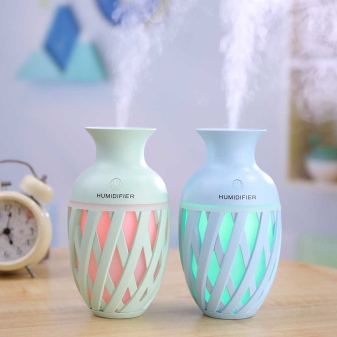
The whole plate dries out
Yucca has a characteristic rest period. So, in winter, the palm tree needs rest, because in the spring it will begin to intensively build up its vegetative mass. If you keep the plant in a room that is too warm, allow temperature jumps, drafts and abundant watering, the reason for the yellowing of the leaf plates will not be a reason for a puzzle. All of the above negative points should be prevented.
In the winter season, home care for yucca involves:
- stably humidified air;
- lighting of the order of 10-12 hours;
- coolness (about 12-15 degrees) without a draft;
- watering no more than once every 2-4 weeks.
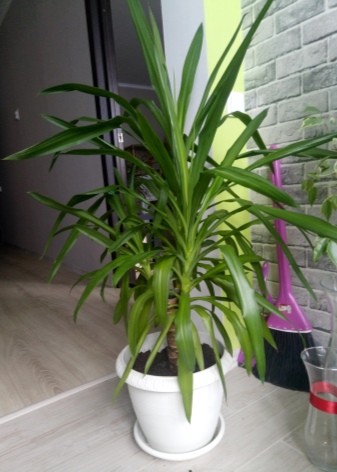
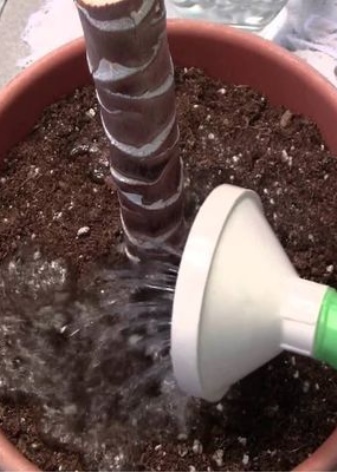
If the leaf plates are covered with yellow spots in the summer season, ultraviolet light will have to blame. The plant turns yellow and dries up due to sunburn.The conclusion is that the palm tree should be removed in a place with diffused light or hidden in partial shade.
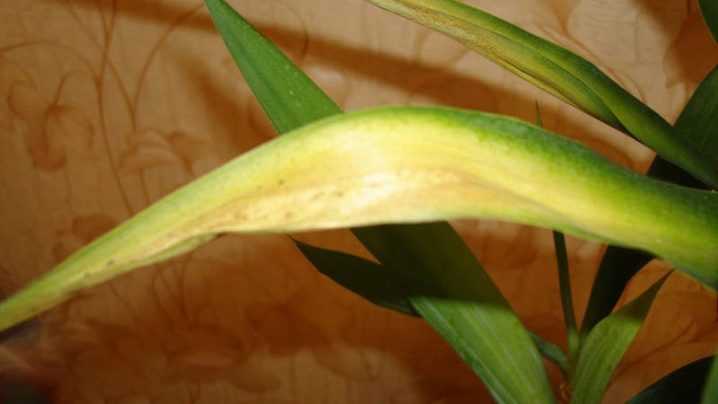
Diagnosis of Yucca Diseases
By some signs, you can determine why the palm tree suffers, what it lacks. Pay attention to how the leaves dry, if there are dead particles on them, and so on.
Cause and effect:
- young leaves of the plant have become white-yellow - the palm needs nitrogenous feeding;
- the adult middle leaf turns yellow completely - the plant does not have enough iron;
- the leaves have lightened, and dark streaks have formed on them - it lacks iron and magnesium;
- the ends of the old leaf turned yellow - also a sign of a lack of nitrogen;
- the yellow plate is crowned with blackened edges - phosphate deficiency.
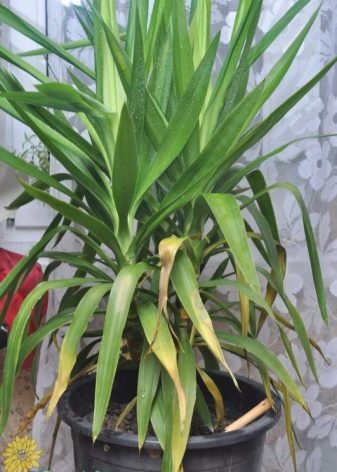
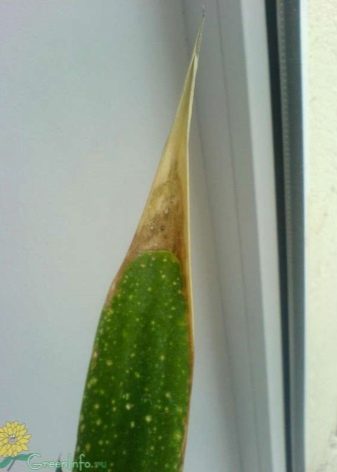
All this speaks about the quality of the soil in the flowerpot. The palm tree lacks valuable nutrients. Therefore, having established the cause of wilting, one should transplant into a new, enriched soil, or spray it with a medicinal agent according to the instructions.
For example, you can spray with iron chelate.

Watering against yellowing
Both garden and indoor yucca do not tolerate very rare watering. But in the same way, she does not tolerate excess moisture. This houseplant is considered a succulent plant, which creates a reserve of water in the stem. This helps the palm tree go through the dry period without loss. At home, succulents need abundant watering, but still infrequent.
If watering the yucca is wrong:
- you rarely water - the plant withers and dries up, the leaves quickly turn yellow and die;
- watering excessively - the roots of the plant sour, as moisture stagnates in the soil.
The roots damaged by increased watering cannot cope with their functions, they are unable to provide the yucca with moisture and valuable trace elements, therefore the shoots turn yellow, the leaves wither, and stretch down.
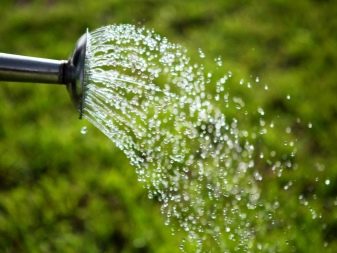

In the summer, watering should follow after the topsoil in the flowerpot has dried. In winter, the earthen lump must completely dry out between waterings, since the plant is dormant (or, as flower growers say, "hibernation"). A sign of excess water is the darkened tips of the leaves, as well as a sluggish trunk.
Pests and diseases
Pests that have settled within the growth of a palm tree can cause yellowed yucca leaves. Basically, spider mites, aphids, and also a scale insect are caught in the attacks. If the insect is sucking, it will suck the juice out of the palm, after which the plant sheds twisted, lifeless leaves. The same illiterate care can provoke an attack of pests: if the indoor flower has a reduced immunity, the air in the room is too dry and there is not enough light.
You need to fight insects without delay so that you can have time to save the plant. The danger of pests is also in the infectious diseases that they carry. Affected leaves need to be removed. If insects belong to those types of pests that settle in the soil, you will have to change the substrate. Pests from leaf plates are washed off with ordinary soapy water.
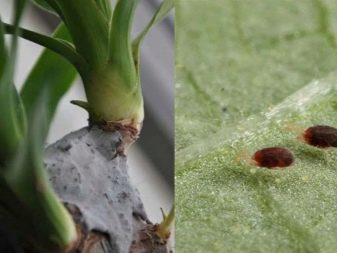

If you overmoisten the root system, the plant becomes susceptible to fungal diseases. Rot is not always immediately detectable. Sometimes flower growers notice it only at the final stages of the lesion.
If you saw that the yucca leaves began to curl for no apparent reason, they darken and turn yellow, it may be a fungus. Treatment in this situation consists in treating the succulent with fungicides.
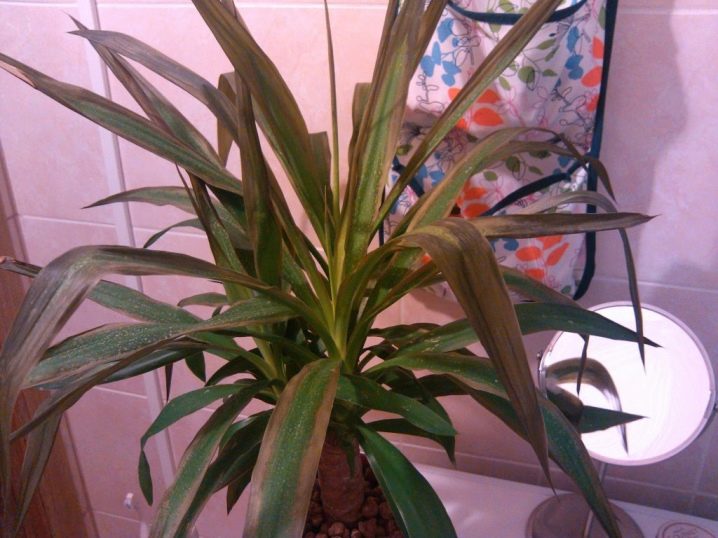
Yucca resuscitation
Not all cases of plant diseases are hopeless, often even an apparently wilting flower can be reanimated.
Helping a yucca - how to save her:
- try to establish a clear cause of the yellowing;
- organize a comfortable microclimate for the palm tree, adequate to the growing season;
- if the leaves have dropped due to lack of water, water the plant with warm water (without fanaticism) and repeat watering after a couple of hours;
- if it is not clear what caused the yellowness of the leaves, the plant needs to be transplanted into a new substrate;
- if rot is found in the root system, the dying roots must be carefully removed (treatment with "Epin" quickly helps to restore the roots);
- when fungal infections are detected, fungicides are used, and insecticides will save from pests.

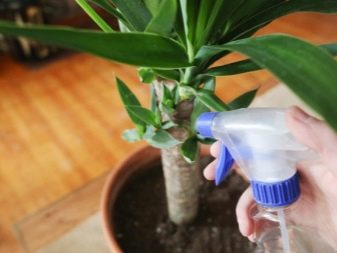
When it gets warmer outside, try to take the plant there from time to time. It can be a street or a balcony. But it is important to protect it from precipitation: if there is a threat, bring the flowerpot back into the house.
Periodically inspect the leaf plates for the capture of the plant by pests. In summer, yucca leaves can be wiped with a soft, damp cloth. Transplant, if there are no emergency measures, carry out once a year in the spring season. You need to feed the false palm once a month with complex formulations.
With such high-quality care, which does not require special forces, the plant can delight with its decorative effect all year round.

For yucca care at home, see the following video.






























The comment was sent successfully.